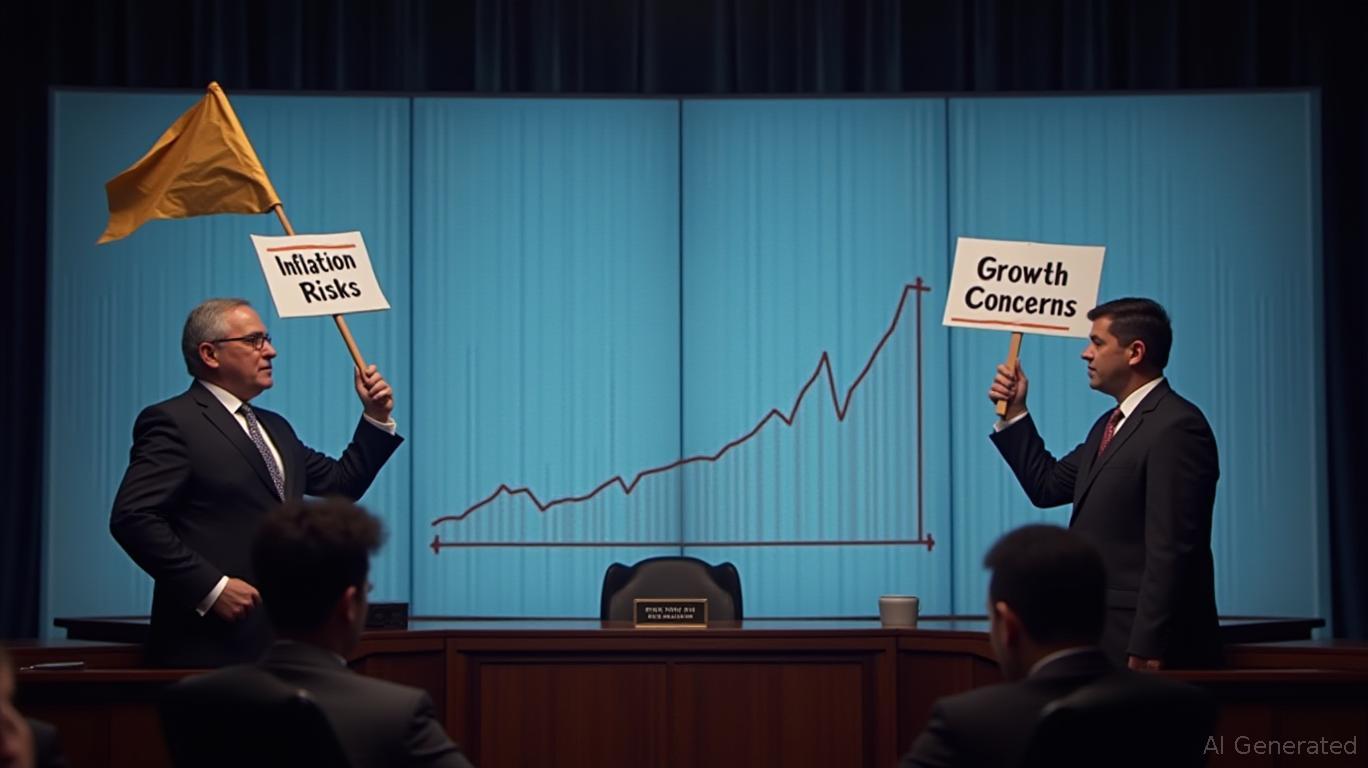The Fed's Dot Plot Divergence: Navigating Rate Risks and Sector Opportunities
The Federal Reserve's June 2025 dot plot revealed a stark divide among policymakers over the path of interest rates, with projections spanning a full 0.8 percentage points for 2025 alone. This widening spread between dovish and hawkish outlooks—driven by conflicting views on inflation risks, tariff impacts, and economic resilience—creates a critical
for investors. As central bankers grapple with uncertainties, sectors such as real estate, utilities, and consumer discretionary now face divergent valuation pressures. Understanding this divergence is key to capitalizing on mispricings and positioning portfolios for the coming rate cycle.The Dot Plot Divide: Hawkish Stance vs. Dovish Hope
The June projections show a median federal funds rate of 3.9% for 2025, with a central tendency of 3.9%–4.4%. However, seven of 19 participants see no cuts this year, while others anticipate two 25-basis-point reductions—a spread that underscores deepening policy uncertainty. This gap is not merely academic: it reflects differing interpretations of inflation's persistence. Hawkish participants emphasize tariff-driven price pressures, which pushed the core PCE forecast upward to 3.1%, while dovish voices focus on a weakening GDP outlook (revised to 1.4%) and rising unemployment risks.

Sector Implications: Rate-Sensitive Plays in the Crosshairs
The Fed's internal debate creates a roadmap for sector rotation:
Real Estate (REITs) and Utilities: These sectors are acutely sensitive to interest rates. A prolonged hawkish stance—keeping rates near 4%—would weigh on their valuations, as higher borrowing costs reduce cash flow visibility. However, if the Fed pivots to two cuts by year-end (as markets currently price), these sectors could rebound sharply.
Consumer Discretionary: This cyclical sector thrives in easing cycles. A dovish outcome with rate cuts would boost consumer confidence and spending, benefiting retailers (e.g., Amazon, Walmart) and luxury brands. Yet, if inflation remains sticky, discretionary stocks may underperform as higher borrowing costs constrain disposable income.
Defensive Plays (Utilities, Healthcare): These sectors offer stability in a hawkish environment. Utilities, in particular, benefit from low growth expectations (as GDP is downgraded) and steady dividends. However, their appeal fades if cuts materialize, as investors rotate into riskier assets.
Historical Precedent: When Divergence Forecasted Rotations
The Fed's dot plot has often signaled turning points. In 2019, a similar spread between hawks and doves preceded a 75-basis-point rate cut cycle, which triggered a 20% surge in consumer discretionary stocks. Conversely, in 2018, a tighter-than-expected median rate led to a 15% drop in REITs. Today's divergence mirrors these inflection points, suggesting investors should prepare for a binary outcome: hawkish persistence or dovish relief.
Investment Strategy: Positioning for Rate Risk
Hawkish Scenario (Rates above 3.5% in 2026):
Overweight utilities (e.g., NextEra Energy, Dominion Energy) and defensive healthcare (e.g., Johnson & Johnson, UnitedHealth Group). Underweight consumer discretionary and cyclical industrials.
Dovish Scenario (Two Rate Cuts by End-2025):
Rotate into real estate (Vanguard REIT ETF) and consumer discretionary leaders. Consider levered plays like homebuilders (e.g., Lennar, KB Home) if housing data improves.
The Bottom Line: Monitor Data, Not Just Dots
The Fed's caution—highlighted by its "significant risks" caveat—suggests a data-dependent path. Investors should track core inflation (target: below 3%) and GDP growth (a sub-1.5% print would likely force a dovish pivot). Meanwhile, sectors like utilities and defensive healthcare offer downside protection, while cyclicals provide upside if the Fed relents.
The June dot plot's divergence is a warning bell: sectors are pricing in conflicting outcomes. By aligning portfolios with the Fed's likely response to incoming data, investors can turn uncertainty into opportunity.

Comments
No comments yet